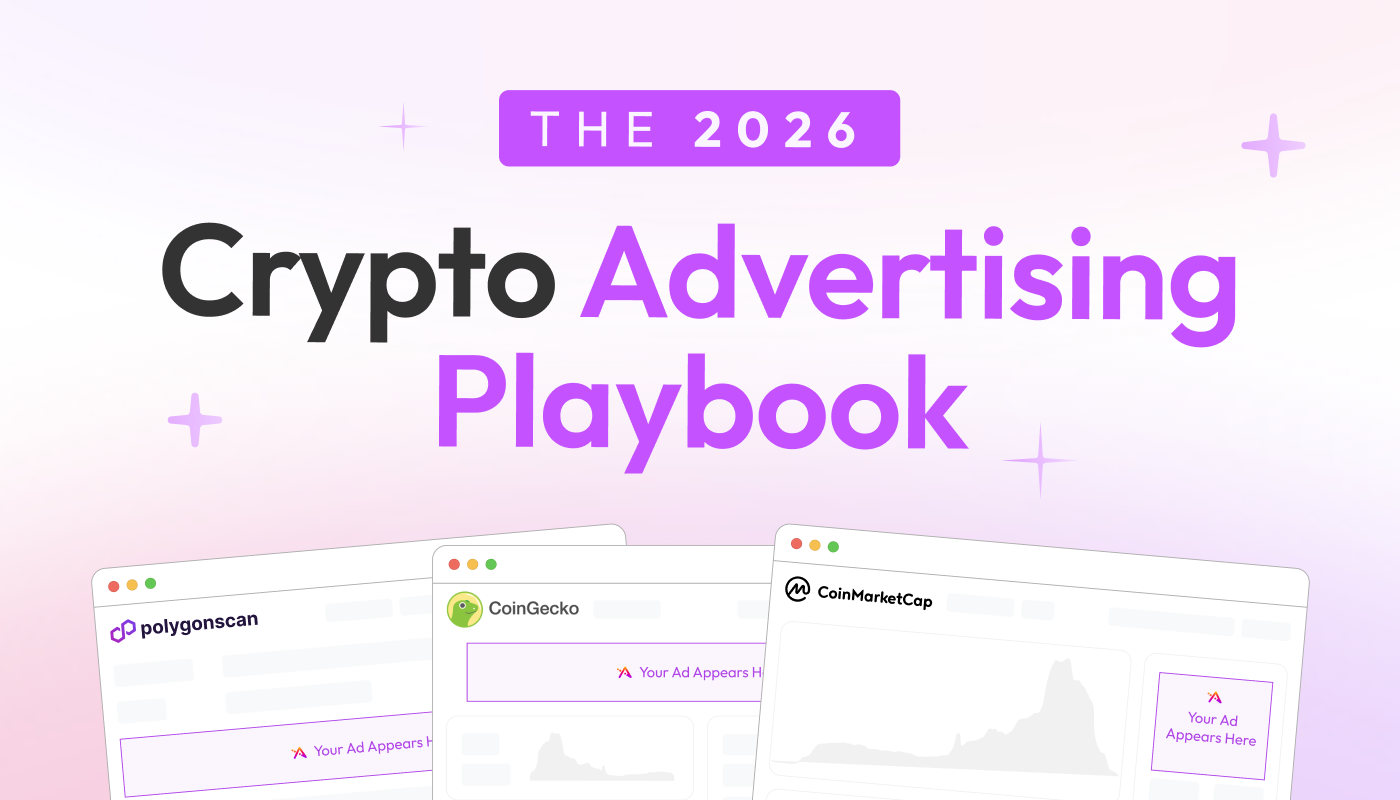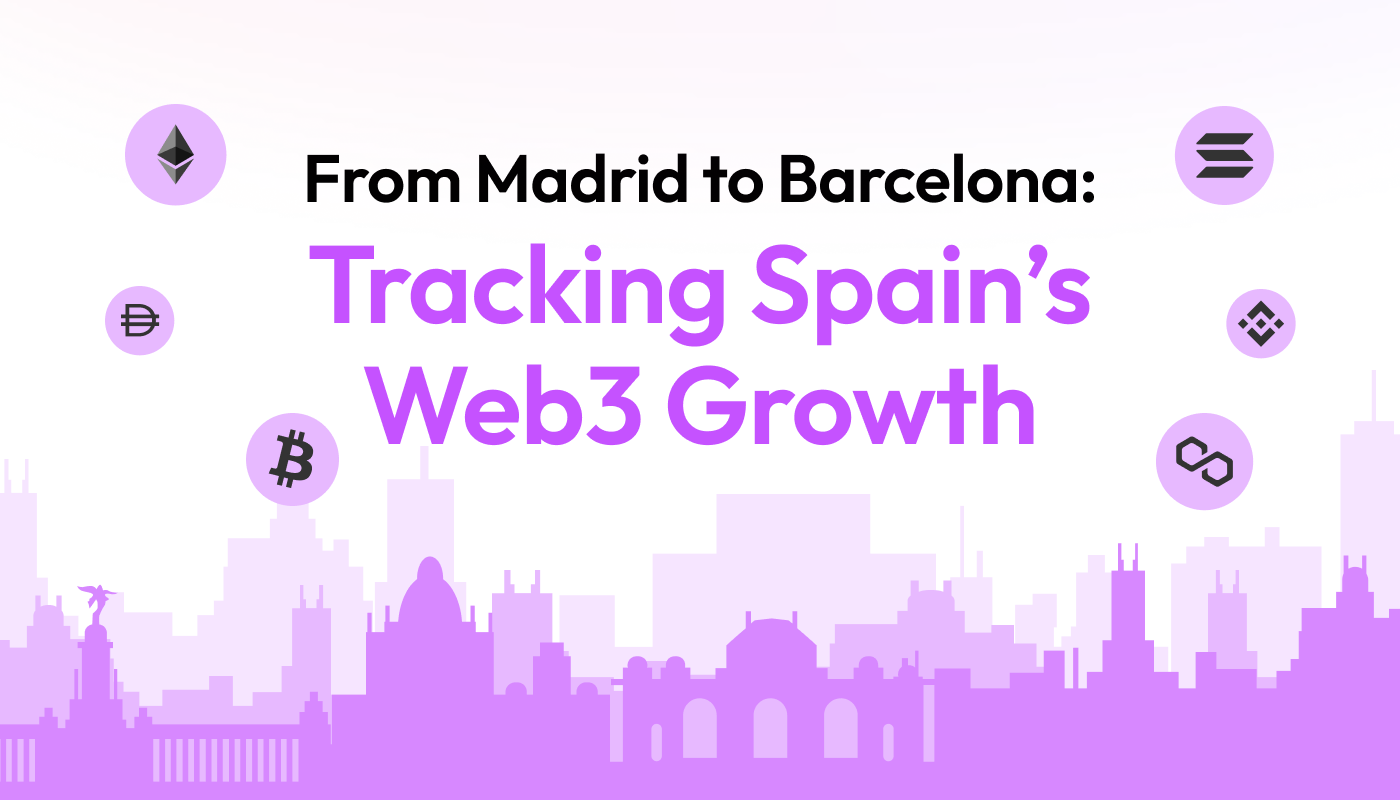Web3 user acquisition on social is not only achievable; it’s mandatory.

You’re a Web3 marketer – and you’ve got a big problem.
All those people using anonymous crypto wallets, thanks to blockchain, can’t be identified… so you can’t communicate with them. Their ages, genders, locations, buying habits, and friends are all carefully secured behind a blockchain wall; their communication channels are unknown.
What’s more, even these anonymous individuals who are already your customers… they can’t be contacted or identified among the huge group of followers you have on Twitter or Telegram.
Not to mention the challenge of identifying and reaching your future customers who can’t be found around the evergreens of social media profiles, because so many people follow Web3 projects but so few of them use crypto “for real”. Sure, you can target the followers of major projects as a group, but you’ll never know which ones are likely to make a blockchain transaction. Why? Because blockchain transactions, activity and behavior are anonymous, and are therefore disconnected from any social network activity.
The challenge facing Web3 marketers today is that nearly all of their potential new users are found beyond the crypto bubble, and even beyond their organic marketing bubble on social networks.
As a Web3 marketer, you’re left wondering how to efficiently acquire new users in the face of anonymity, knowing that you must acquire those users. The challenge facing Web3 marketers today is that nearly all of their potential new users are found beyond the crypto bubble, and even beyond their organic marketing bubble on social networks. How, then, can you expedite mass adoption of your product by mainstream users, if you can’t identify, target or recruit them?
Good question.
Welcome to the history channel - we’ll walk you through the background of what’s possible now, and why targeting blockchain users on social channels is not only achievable, but absolutely mandatory for growth.

Blockchain: Emergence, Evolution, and Enthusiasts
Blockchain technology emerged in 2009, enabling data, currency and other assets to be exchanged without the need for intermediaries or centralized governing bodies. To many, it felt like a life-changing technology with endless possibilities. Whereas Web2 collects data on the networks of huge companies like Facebook and Google (which also control users’ identities), blockchain and Web3 allows access without relying on a corporate, centralized network.
Offering the promise of creating a decentralized, secure digital ledger on a peer-to-peer network, blockchain technology drew the attention of innovators and visionaries to explore its full potential.
After a significant period of purely-financial applications, circa 2016, the tech community started witnessing individual initiatives exploring the boundaries of blockchain in creating new non-financial experiences and use cases. At this point, the introduction of smart contracts enabled more than just “store of value.” It has enabled a decentralized and flexible programming language that allows developers to create new, decentralized applications for various needs.
The early adopters in this landscape, the individuals tapping the potential of blockchain, are coders who embraced creativity and pushed the known blockchain boundaries. These visionaries bent, shaped, and adapted the technology to create entirely novel applications – not for the promise of profit, but for the joy and satisfaction of innovation alone.
These “original gang” fellas, or crypto degens, were about art, games and financial protocols in a new decentralized flavor, and the fruits of their labor were sufficient to draw the interest of additional technical users. Enter tech enthusiasts.
The interest of the tech enthusiasts marks the evolution from individual initiatives into a community of developers and startups exploring a wider range of applications. Today, they are creating art, inventing games and writing financial protocols that will benefit from faster development cycles. Through code sharing and a community of like-minded enthusiasts, the future promises a burst of creativity and an expanding universe of ideas.
Alongside the evolution of the crypto degens into (sometimes vc-backed) tech enthusiasts, the market has evolved as well. In the beginning, innovators built applications to benefit themselves. Today, tech enthusiasts and well funded startups are building applications for a less tech-savvy audience that nonetheless understands the great promise of blockchain and wants to be part of the vision, without compromising user experience.
.png)
As this market develops, it becomes more difficult for any single application to shine through the increasingly noisy market.
As this market develops, it becomes more difficult for any single application to shine through the increasingly noisy market. Ultimately, this challenge is leading to tech enthusiasts founding well funded startups capable of building not only superior applications, but an established brand and marketing strategy as well.
Visionaries, Enthusiasts... but very few “Standard Users”
Herein lies today’s challenge. While blockchain and its promise of a decentralized world has attracted plenty of techie users looking for opportunities, and even offers marketers Web3 marketing tools to support their targeting efforts, the current blockchain-dedicated population - people who live, eat, work, socialize and breathe on blockchain, constitutes an entirely insufficient user pool.
While there are plenty of techies (“hard-core users” who, in essence, live in a blockchain world) and a reasonable number of “light users” (those who may own tokens, are considering investing further, played a blockchain-based game or two) these two populations - even combined - aren’t enough.
The hard-core users who are constantly active in blockchain communities and base themselves there (rather than on social media) is miniscule. The “light users” aren’t embedded enough or active enough in the blockchain world to hear, consume or act upon your marketing efforts. While the heavy users will pay attention to announcements when a Web3 marketer offers an NFT drop or posts loudly on discord, the announcement won’t reach the light users. Even if the announcement is a success, its success is exceptionally limited to those who are listening. The numbers simply aren’t there, because blockchain is missing most of the population, aka “standard users”.
Today, the blockchain market does not lack for innovators, enthusiasts or backers. In fact, the market is saturated with all three. What we in the blockchain marketing community are missing today is standard users. At the moment, all the application developers and marketing teams are fighting over a small number of consumers.
Web3 Marketing in 2023 and Beyond: Crossing the Chasm by Acquiring Standard Users
Over the past two years, 3,700+ crypto and Web3 startups raised $43.5 billion. These initiatives are facing not only the standard startup growing pains, but on top of the new challenge: developing the market from appealing to the innovators to drawing in the majority of the market (the standard users) made up of pragmatists and conservatives. Enter the challenge of crossing the chasm.
The pragmatists:
Pragmatists are end users operating mainly in Web2 who are willing to try apps in Web3 if (and only if) they create new and unique experiences. Think of your spouse, who is likely unfamiliar with blockchain (and doesn’t care about underlying technologies.) That spouse will adopt new technology if it serves them or fulfills a need; they look for purpose and have zero tech loyalty.
The conservatives:
Conservatives are end users operating only in Web2 who are waiting for a large adoption before they dip a toe into Web3 technology and potential. These are the same people who won’t buy an electric car until they see their neighbors driving one. Think of your mom - what would it take to get her to use blockchain? After you’re done laughing, take a breath and believe it. When everyone got a smartphone, she did too. Once the tech is ubiquitous, everyone joins.
Combined, the pragmatists and conservatives are “most people”. And this is where Web3 startups must aim, rather than remaining inside the already saturated, user-light Web3 bubble.
Growing your audience and reaching mass Web3 adoption cannot take place by renouncing Web2 and sticking to air-drops and NFT giveaways as a form of marketing. For sustainable growth it must also go outside of the organic Web3 community on social networks, and, god forbid.. even use some ads to increase its reach.
Web3 marketers can cross the chasm to reach the pragmatists and conservatives by relying on three pillars:
- Embrace a seamless UX: Users don’t care about the underlying technology. They certainly don’t care which blockchain you’re using and whether you’re even using a blockchain. They care about the value they get (something new, fun, useful: WIIFM?) and an intuitive, smooth experience.
- Commit to a Product first, token later (PFTL) model: Our approach is in contrast to the common practice of “Token first, product later.” The status quo is problematic because tokens are often introduced simply to increase the value of the token and not to build the promised product. The “flippers” are investors who profit at the expense of the product and its enthusiasts.
Instead, we believe developers and companies should focus on the product first and then create a token to fund its growth. Fortunately, we see more and more organizations taking this approach and anticipate it will lead to more sustainable market growth.
- Get the users attention in their world: You need to get the pragmatists’ and conservatives’ attention where they spend their time. You know where they are: they’re on Twitter and Instagram. If you already have a huge audience of followers, that’s great! If you don’t, influencer marketing and promoted ads are probably the way to get there. You must appeal to your potential new users where they are now.
The recent fall of FTX and the market speculation makes the upcoming period a defining moment for blockchain companies. Builders should focus on growing their businesses through superb user experience, quality products and effective, targeted social marketing. The visionaries may come for hope, but the pragmatists and conservatives being the majority of the market will come and stay only for value. This is where we should all aim.

.png)






